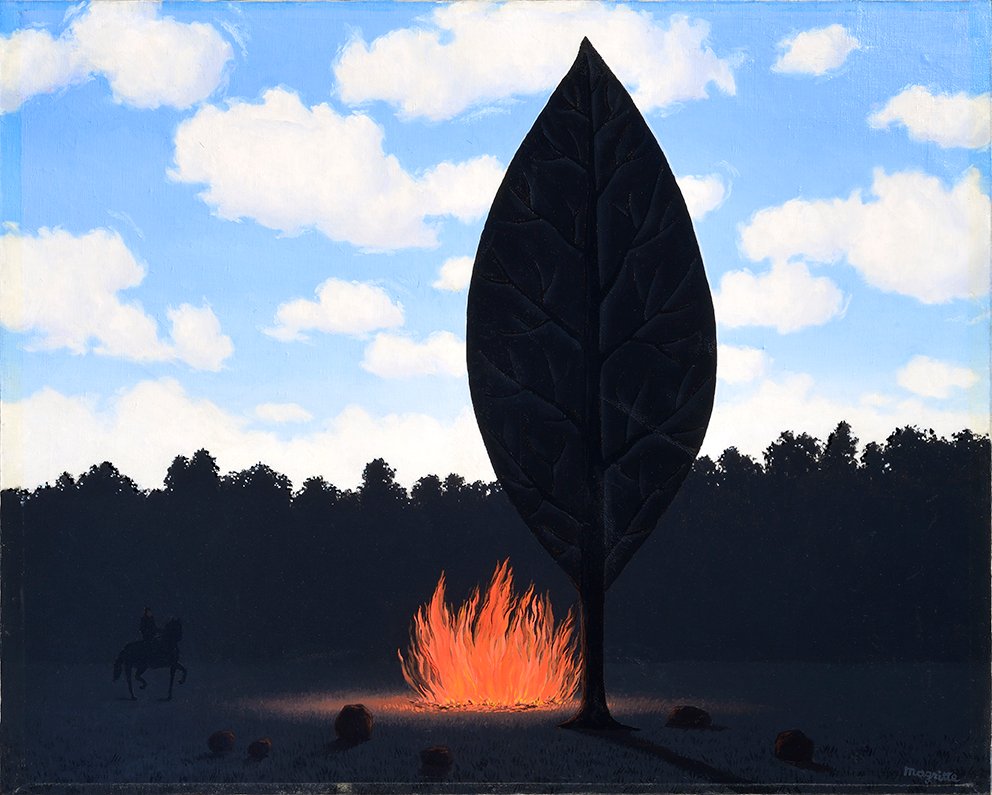René Magritte
Lessines, Belgio, November 21, 1898— Bruxelles, Belgio, August 15, 1967

René Magritte was born in Lessines, Belgium, in 1898, where he lived until his mother committed suicide in 1913. That same year, he moved with his family to Charleroi, where he attended art courses at the Athénée until 1915 and in this period of time he painted his first impressionist-influenced canvases. Between 1916 and 1920, he lived in Brussels, where he met P. L. Flouquet, with whom he collaborated on the magazine Au Volant by P. Bourgeois in 1919. Starting in 1916, he lived in Brussels and in 1920, after a brief trip to Paris, he meditated on the ideas he had absorbed from the futurist and cubist artists he encountered there.
Not only a painter but also a writer, between 1925 and 1926, Magritte met M. Lecomte, who introduced him to surrealist poetry and brought him closer to the metaphysical suggestions of De Chirico. He also collaborated with E. L. T. Mesens on the dadaist-inspired magazines Oesophage and Marie. Thanks to these new and diverse influences, the 1920s were a period of artistic innovation for Magritte: he drew the essential elements of his works from real and everyday scenes, not from the realms of imagination, creating unexpected juxtapositions and suggesting dreamlike and mysterious atmospheres.
In 1927, he moved to Paris where he met artists like André Breton, Joan Miró, and Paul Eluard. Here, he joined the surrealist group and appeared at the Exposition Surréaliste at C. Goemans’ gallery in 1928. In 1930, he returned to Brussels with his wife, and their home at 135 rue Esseghem in Jette became a meeting place and reference point for the Belgian Surrealist Movement.
In 1936, he had his first solo exhibition in New York and participated in the exhibition Fantastic Art, Dada and Surrealism at the Museum of Modern Art in New York the same year. These American milestones established Magritte as a global reference for the surrealist movement.
The painting La fenêtre ouverte from 1966, created a year before his death and preserved in Palazzo Maffei Casa Museo, best represents and synthesizes the stylistic and value elements of René Magritte’s artistic maturity. A landscape is presented to the public, where the methods and choices of representation highlight the enigmatic relationship between representation and reality, instilling doubt about what is truly real. Reflecting on the mystery of this relationship, hidden in everyday images, is essential for dismantling the conformist rules of society. La fenêtre ouverte, the open window, gives a voyeuristic value to the entire scene, transforming it into a mystery to be unveiled.
In 1966, he took one last trip to Cannes, Montecatini, and Milan before returning to Brussels, where he died on August 15, 1967.